9 Body Language Secrets That Will Make You Look Powerful, According to an Expert
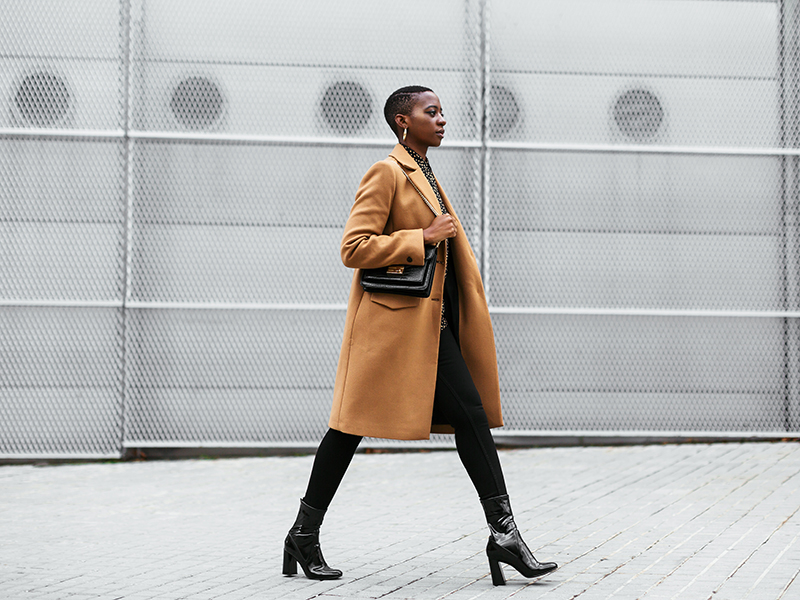
Your body language can convey a lot, and you don't have to say anything. Others might be able to tell you're nervous, angry, or confident through how you're standing or sitting. It's crazy to think that body language can reveal a lot about what a person is thinking or how they're feeling, but for most of us, actions really do speak louder than words.
"If you want to present as confident, both your verbal and nonverbal communication matter," says Madeleine DiLeonardo, MEd, LPC, NCC, a licensed professional counselor and the founder of Mind Body and Soul by DiLeonardo Wellness. "Psychologically, body language is very important because if there is a discrepancy between a verbal and nonverbal message, the person on the receiving end will be aware of this discrepancy and often focus on the nonverbal behavior. Additionally, as humans, we are aware of what types of body language indicate confidence and power and which indicate passiveness or timidness. Even if you are saying all the right things, your body language contributes to the way your message is being received."

So how can you make sure you get your point across and really mean it with your body language? How can you walk into a big meeting with an air of confidence? How can you have a difficult conversation with a friend, partner, or loved one and seem strong? How can you nail that big job interview? Honing your body-language skills to appear confident, powerful, and in control takes practice, explains body language expert Blanca Cobb.
She likens it to learning a foreign language: "You might feel a little awkward when you learn a new language. You're not sure how to pronounce it, you're not sure if someone's going to understand, you're not even sure some of the words that you're saying, if you know what they really mean. So you don't have a lot of confidence. But the more you speak that new language, the more it becomes part of your own vernacular, right?"

Cobb says that a lot of times, body language is instinctual. Since you can't stop your subconscious from reacting, knowing some body language tips can help you appear in control in certain situations. She shared some below.
1. Correct Your Posture
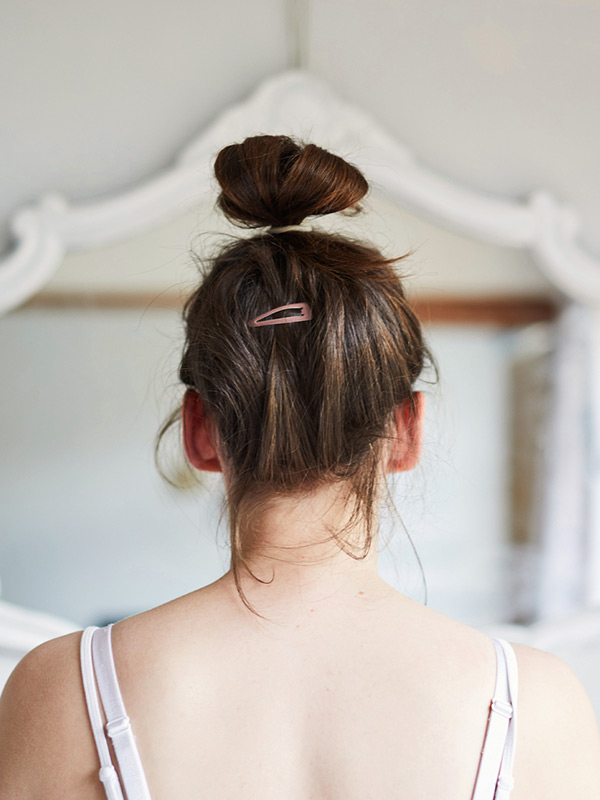
First things first, you've got to stand tall. Good posture will especially help you in a situation where you're nervous.
"Assess your own posture," Cobb suggests. "Moms have been notorious for saying, 'Chin up, shoulders back.' There's a reason for that because you will not only look more confident, but you will also feel more confident. A lot of times women who aren't feeling confident, they'll look down. Make sure that your chin is up, that your head is level with your shoulders. Make sure the shoulders are back."
And when you walk, she says to walk steady and with a gait that is not too fast and not too slow.
2. Place Your Feet Hip-Distance Apart

This is one way to "take up space." You've probably heard this term before but aren't exactly sure what it means. It's all about how you position yourself in a room or in a space. "Let's say you're standing up, that your feet are together. You look like a pencil," Cobb explains. "But then if you have your feet hip-distance apart, that comes across as sturdier, stabler. You're using both feet. You have the separation—that's taking up space."
As for your arms and hands, Cobb says if you have your hand on your hip, that is another way to take up space.
3. Sit Down With Purpose
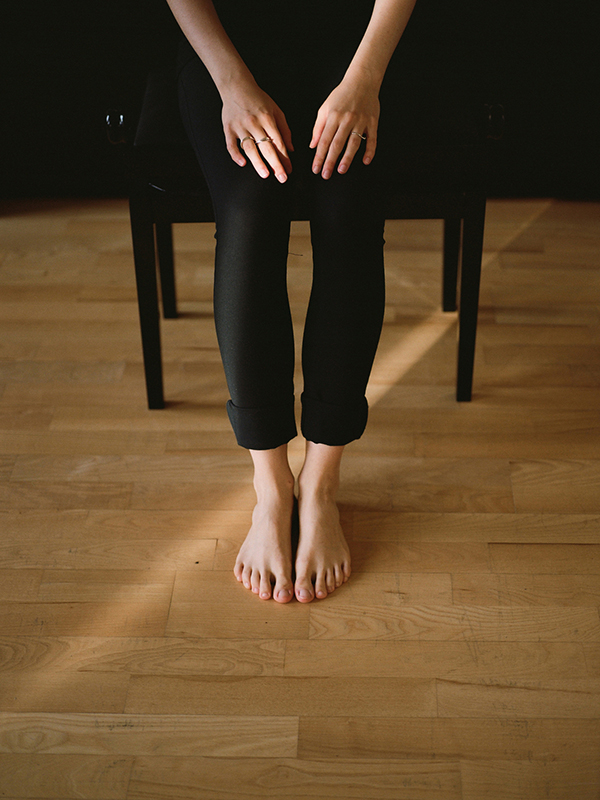
"When you're sitting down, you can sit down with both legs together, or you can do a figure four," Cobb says. "A lot of confident people will do a figure four. You have one leg normally bent. Then the ankle of your other leg is lying on the thigh of the leg that's bent normally."
If you can't do a figure four because you're wearing a dress or skirt, she says you can cross your legs at the ankle. You can also do a tilt or "duchess slant," where your knees are together and pointed in one direction and your ankles are side-by-side in the opposite direction. (Kate Middleton and Meghan Markle do this royal pose.)
While power poses are a bit of a controversial topic because the initial research study was not able to be replicated, they can help some people. Cobb says there is a power pose for sitting. "You're sitting in a chair, but your legs are stretched out in front of you, and then you're leaning back in the chair with both elbows popped out on the armrest. That's taking up space," she explains. "Or you're sitting on the couch and then you have one arm draped on the back of the couch, or you have both arms draped, hanging on the back of the couch."
4. Place Your Hand on the Table

If you're in a situation where you want to take up space, placing your hand on the table can help. She says if you're standing up and talking to someone across a table, place your hand on the surface, spread your fingers out a bit, and lean forward slightly.
5. Face Your Boss This Way

Let's say you're in an important meeting in your boss's office and you're sitting across from them. Cobb says you should position your chair slightly to the side instead of directly in front of them. "If you can have your chair a little catty-corner from them where you're still looking and turning toward your boss, but it's not completely dead-on," she explains. "You're just off-centered a little bit. That comes across as less confrontational. People subconsciously don't realize what's happening, but it's just an issue of comfort. You can still come across as very confident in that regard also."
6. Be Careful With Gestures

If you normally talk with your hands a lot, you might want to tone it down or make them a little subtler. Cobb says if you're talking to just one person, you should keep your gestures within shoulder distance and to avoid making them too wide outside of your body.
"When you're using your hands, they accentuate what you're going to say," she explains. "It's almost like a nonverbal highlighter. But you want to be in control of those movements. You just don't want to have your hand just making a lot of circles. Some people, they get really excited, animated, and their hands do go wild."
7. Face Your Palms Up

"Having your palms up and out when you're talking is great," Cobb adds. "But you have to be careful that you don't become robotic and you're talking the whole time with your palms up because that gets a little awkward. There has to be some ebb and flow and some naturalness to it."
On the other hand (pun intended), sometimes keeping your palms down can seem off-putting. "Let's say when you're talking, some people will use their hands, but they'll put the palm down," she says. "It's almost like you're trying to quiet the other person like, 'Hush,' because your hand goes from top to bottom in the air."
8. Don't Point
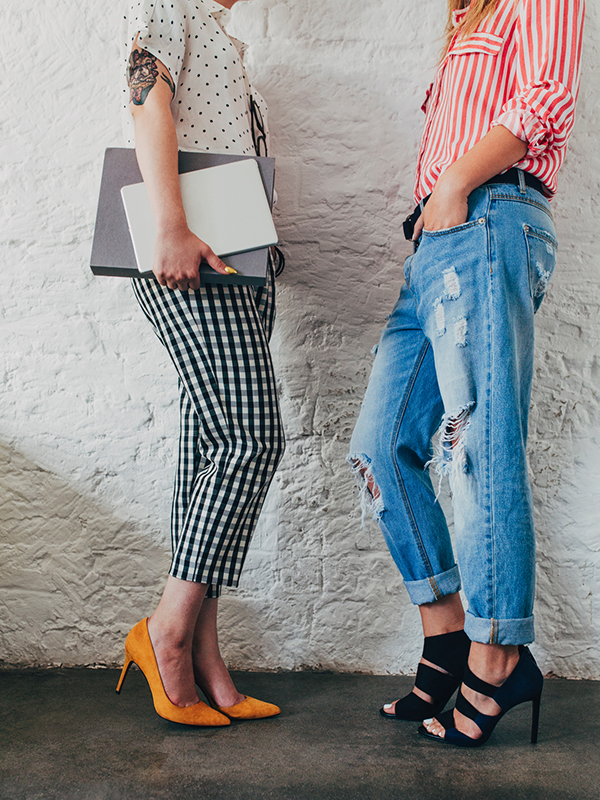
Jabbing or pointing your finger can seem aggressive and confrontational. If you need to point, Cobb recommends just keeping your index finger up, like you're saying, "Just one second."
9. Maintain Eye Contact

Raise your hand if you're not great at eye contact. I have my hand raised, too. It can feel uneasy meeting someone's eyes when you're feeling nervous or for a long period of time. Cobb says that eye contact lets someone know you're interested. When you break eye contact, the other person might think you aren't telling the truth, leaving something out, or that you're not feeling comfortable talking about something or speaking to them.
To help, she suggests focusing on one area (an inverted triangle) of a person's face. "The outside corner of the eyebrow on the right side, going straight across to the outside corner of the left eye, then coming down to the tip of your nose, and going back to that right corner of your right eye—that's an inverted triangle, and that's where you want to give eye contact," she explains. "For people who are a little uncomfortable giving eye contact, if you look anywhere within that invisible inverted triangle, it still gives the perception that you're looking at somebody without directly looking at them in their eye. Then it's less intrusive for those who are uncomfortable giving eye contact."
How to Practice

Body language doesn't mean anything if you don't actually mean it. You could be sitting in a figure-four pose, but your foot is tapping, which might indicate to others that you're anxious, nervous, or distracted. Cobb says that's two competing body language gestures. So when you are practicing these moves, you'll want to do it with purpose.
"People are going to believe the negative before they believe the positive," she explains. "That's how it comes across as inauthentic because it doesn't match."
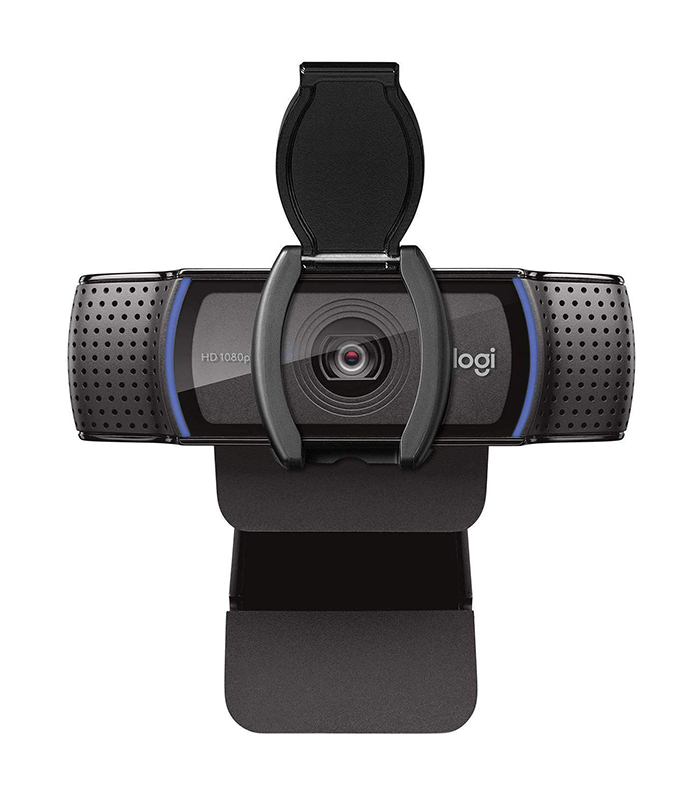
If you really want to study your body language, Cobb suggests filming yourself. She says you can ask your roommate, partner, or friend to put the camera on you while you're having a conversation with them. "Then you can go back and look at what happened to that conversation," Cobb says. "Let's say you got irritated about something. How did you express it? It's just becoming cognizant of it. The same is true for your facial expressions. What does your face do? How does it move when you're angry? How does it move when you're sad? How does it move when you're happy or bored?"
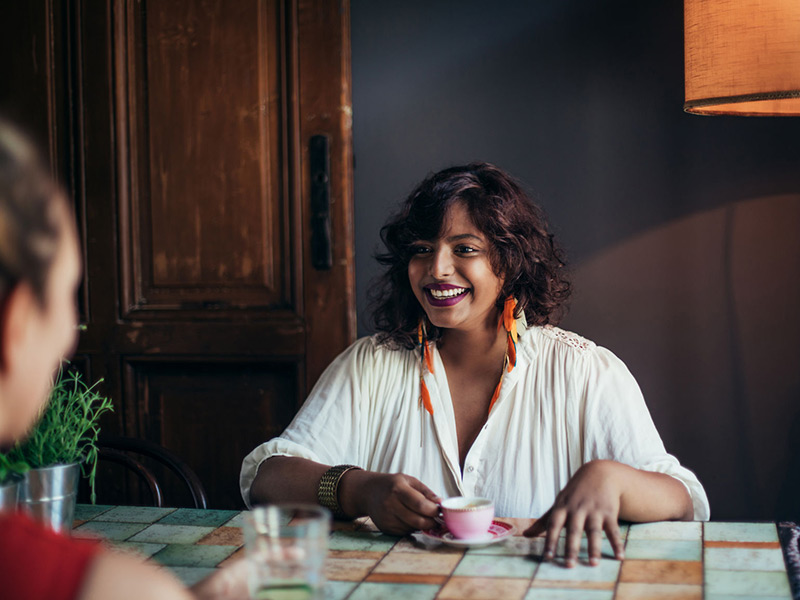
And if you don't feel like videotaping yourself, you can also just ask your friends about their own takes on your body language from a past conversation or encounter. Cobb says you can ask them things like, "How'd you know I was happy? How'd you know I was sad? How'd you know I was trying to hide something from you? See what somebody else says because what they're seeing, more than likely others are seeing, too."
Next up: 14 Ways You Can Stand Up for Yourself, Even When It's Hard
This article is provided for informational purposes only and is not intended to be used in the place of advice of your physician or other medical professionals. You should always consult with your doctor or healthcare provider first with any health-related questions.
Sarah is lifestyle writer and editor with over 10 years of experience covering health and wellness, interior design, food, beauty, and tech. Born and raised in Los Angeles, she attended New York University and lived in New York for 12 years before returning to L.A. in 2019. In addition to her work atBest Knockoff Luxury Clothing , she held editor roles at Apartment Therapy, Real Simple, House Beautiful, Elle Decor, and The Bump (sister site of The Knot). She has a passion for health and wellness, but she especially loves writing about mental health. Her self-care routine consists of five things: a good workout, “me” time on the regular, an intriguing book/podcast/playlist to unwind after a long day, naps, and decorating her home.